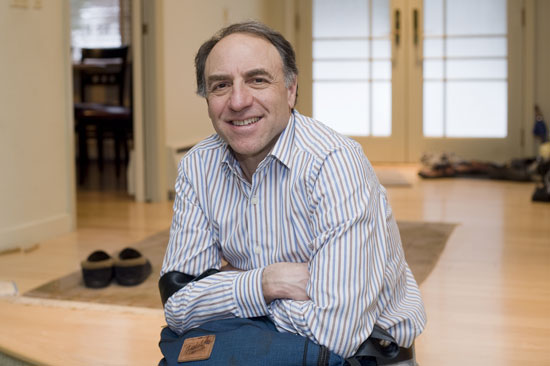Transforming Tragedy into Life Lessons
One author’s story of opening doors in his community
A. Sue Weisler
Peter Lovenheim
Remember the good old days, when neighbors knew each other well enough to chat over the fence, borrow a cup of sugar, and take in the newspaper when someone was away? Now, in an age of near-constant global connectivity and immediate availability, forget about a cup of sugar—the people next door are strangers. Society is more disconnected than ever from community, but what is anyone doing to fix it?
Peter Lovenheim, adjunct professor of English at Rochester Institute of Technology, set out to correct the situation on his own street when a brutal murder-suicide shook the community to its core: He grabbed his pillow, knocked on doors, and asked if he could spend the night. He documents his quest to get to know his neighbors and create a sense of community in the book In the Neighborhood: The Search for Community on an American Street, One Sleepover at a Time. The book, which will be released April 6, has been optioned by Red Om Films, Julia Roberts’s production company, and a movie version is currently in development.
“Before my first sleepover, my daughter exclaimed ‘Dad you’re crazy!’, an opinion I am sure was shared by a number of other people in the neighborhood,” notes Lovenheim. “But through this experience I think our street as a whole began to break down the barriers we had all created and become a real community.”
Lovenheim has lived on Sandringham Road in Brighton for most of his life. Back when he was a kid, in the 1960s, families on this street were friends, kids played together, and neighbors looked out for each other. But it was only after a brutal murder-suicide in the early 2000s shocked this comfortable enclave that he was struck by a fact of modern life: No one knew each other.
By documenting his sleepovers, Lovenheim takes readers inside the homes, minds, and hearts of his neighbors. Among the people he comes to know—and in some cases connect to each other—are an 81-year-old widower with a lot of expertise and compassion to share, a newly single mother of two who is battling breast cancer, and a professional “power couple” at the top of their game.
Throughout the course of Lovenheim’s social experiment, he makes new friends, but also begins to explore what we owe each other not only as neighbors, but as human beings. He wonders if a similar tragedy could be prevented if neighborhoods across the country start functioning as tight-knit communities once again.
“Our political leaders speak of crossing party lines to achieve greater unity,” Lovenheim says. “Maybe we should all cross the invisible lines between our homes and achieve greater unity in the places we live. Probably we don’t need to sleep over; all it might take is to make a phone call, send a note, or ring a bell.”
Lovenheim’s articles and essays have appeared in The New York Times, New York Magazine, Moment Magazine, and many other publications. He is also the author of six additional books, including Portrait of a Burger as a Young Calf; New Stories from the Bible; Mediate, Don’t Litigate; How to Mediate Your Dispute and Becoming a Mediator.







